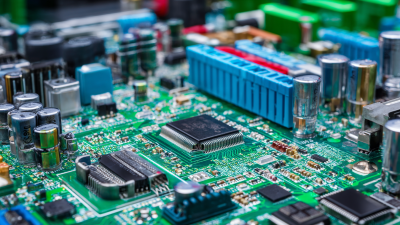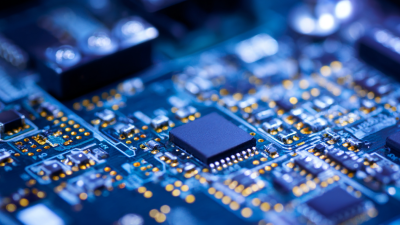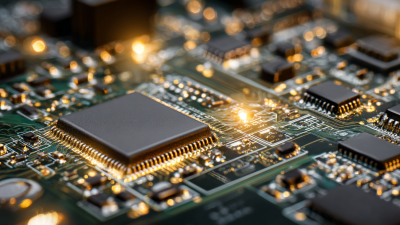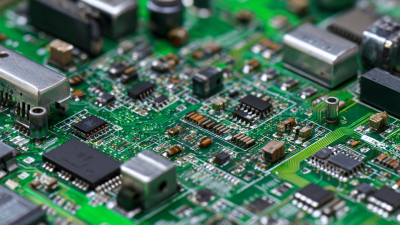The Ultimate Guide to Mastering Circuit Board Assembly Techniques for Success
In today's rapidly evolving electronics landscape, mastering circuit board assembly techniques is paramount for success in the industry. According to recent market research, the global printed circuit board (PCB) assembly market is projected to reach $90 billion by 2025, driven by the rising demand for advanced electronic devices and innovations in technology. As manufacturers strive to improve production efficiency and reduce costs, understanding the intricacies of circuit board assembly becomes essential. This comprehensive guide will explore the best practices, tools, and technologies that can elevate your assembly processes, ensuring you stay competitive in an ever-changing market. Whether you're a seasoned professional or just starting, these insights will provide you with the knowledge needed to excel in circuit board assembly and contribute significantly to your organization's success.

Understanding the Basics of Circuit Board Assembly Techniques
Circuit board assembly is a crucial process in electronics manufacturing, requiring a firm grasp of various techniques to ensure efficiency and quality. Understanding the fundamentals starts with recognizing the components involved in circuit board assembly. From surface mount technology (SMT) to through-hole assembly, each method has its unique advantages and applications. Mastering these basics lays the groundwork for more advanced techniques and enables electronics professionals to effectively communicate and collaborate on complex projects.
Another pivotal aspect is the assembly process itself, which includes several stages such as soldering, inspection, and testing. Soldering is particularly essential, as it connects different components securely to create a functional circuit. Familiarity with different soldering methods, like wave soldering or reflow soldering, enhances the assembly's reliability. Equally important is the inspection phase, where ensuring high-quality standards can prevent malfunctions later on. By focusing on these foundational techniques, individuals seeking success in circuit board assembly can enhance their skills while contributing to the overall efficiency and effectiveness of electronic device production.
The Ultimate Guide to Mastering Circuit Board Assembly Techniques
Key Tools and Equipment for Efficient Circuit Board Assembly
Efficient circuit board assembly is crucial for ensuring the functionality and reliability of electronic devices. Selecting the right tools and equipment can significantly impact both the quality of the assembly and the speed of production. According to a recent report by IPC, the global market for circuit board assembly equipment is projected to reach $4 billion by 2026, highlighting the importance of investing in the best tools available.
One essential tool is the pick-and-place machine, which automates the placement of components on PCBs. This machine can increase production efficiency by up to 50%, reducing labor costs and minimizing human error. Additionally, incorporating solder paste printers can enhance the uniformity of solder application, leading to fewer defects during the assembly process.
Tips: When choosing equipment, consider compatibility with various board sizes and component types to ensure flexibility. Regular maintenance of machines can prevent costly downtimes and prolong their lifespan. Training staff on the latest technologies can also lead to improved assembly speeds and better quality control, ultimately contributing to a more successful production line.
Common Circuit Board Assembly Mistakes and How to Avoid Them
When embarking on the journey of circuit board assembly, common mistakes can lead to significant setbacks in both time and resources. One prevalent error is overlooking the importance of thorough component placement. Misalignment can result in connection failures, leading to circuit malfunctions. To avoid this, use guidelines and markings on the PCB to ensure precise positioning. Additionally, employing automated placement devices can enhance accuracy and efficiency, minimizing human error.
Another frequent mistake is neglecting to inspect solder joints. Poor soldering can cause weak connections, which may not be immediately detectable but can lead to device failure over time. It is vital to develop a systematic inspection routine using visual checks and testing tools like magnifiers or X-ray machines. Establishing a quality control process ensures that each completed assembly meets high standards, reducing the risk of future operational issues. By recognizing and addressing these common pitfalls, you can significantly improve the reliability and success of your circuit board projects.

Advanced Techniques for Enhancing Circuit Board Assembly Quality
When it comes to circuit board assembly, improving the quality of your products can significantly impact performance and reliability. One key advanced technique is the adoption of surface mount technology (SMT).
 SMT offers a compact solution where components are mounted directly onto the surface of the PCB, reducing the overall space required and allowing for denser packing of components. This technique not only enhances the reliability of the assembly but also streamlines the manufacturing process, making it easier to automate and less prone to human error.
SMT offers a compact solution where components are mounted directly onto the surface of the PCB, reducing the overall space required and allowing for denser packing of components. This technique not only enhances the reliability of the assembly but also streamlines the manufacturing process, making it easier to automate and less prone to human error.
In addition to SMT, implementing thermal profiling during the reflow soldering process is crucial for maintaining the integrity of the components and the circuit board itself. Proper thermal profiling ensures that each component receives the right amount of heat without exceeding tolerable limits, which can weaken solder joints or damage sensitive components. By using advanced thermal imaging technologies, manufacturers can accurately monitor and adjust the heating cycle, thereby enhancing the overall quality of the assembly. These advanced techniques are vital for achieving excellence in circuit board assembly, leading to more robust and dependable electronic devices.
Best Practices for Testing and Inspecting Assembled Circuit Boards
When it comes to testing and inspecting assembled circuit boards, adopting best practices is crucial for ensuring quality and functionality. One of the key tips is to implement a thorough visual inspection process. This should include checking for solder bridges, misalignments, and component placement. Investing in high-quality magnification tools can facilitate this process, allowing inspectors to catch small defects that may be missed with the naked eye.
In addition to visual inspections, conducting electrical testing is essential. Tips for successful electrical testing include using automated test equipment (ATE) for efficiency and accuracy. Ensure that the test fixtures are designed specifically for the circuit board layout to avoid any unnecessary damage during testing. Regularly calibrating the test equipment will also help maintain reliability in the results obtained.
Finally, incorporating a robust documentation process for both testing and inspection activities can significantly improve circuit board assembly quality. Keeping detailed records of inspections, test results, and any discovered anomalies allows for better tracking of potential issues and informs future assembly practices. By following these best practices, manufacturers can enhance the performance and durability of their assembled circuit boards.
Related Posts
-

Navigating Import Export Certifications for Best Electronic Board Assembly Suppliers
-

Essential Tips for Identifying Top-Quality PCB Assembly Manufacturers
-

Unleashing the Power of Chinese Manufacturing in the Best PCB Production
-

How to Choose the Best PCB Fabrication Partner for Global Supply Chain Success
-

Essential Checklist for Choosing the Best PCB Fabrication Services Based on Industry Standards
-

Ultimate Checklist for Selecting the Best PCB Fabrication Services Worldwide
